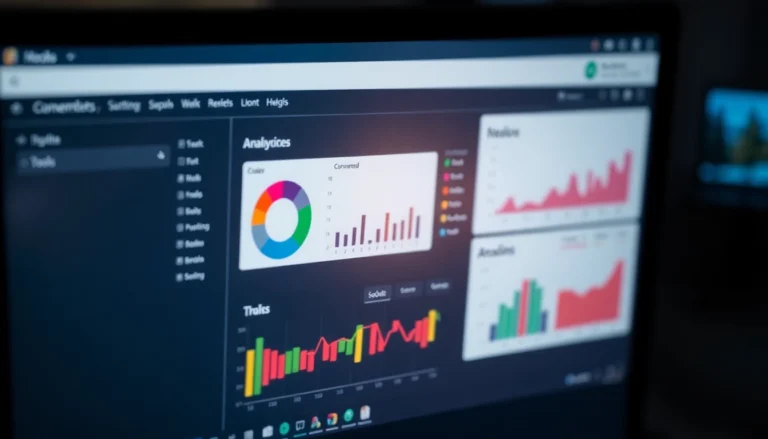
Understanding Aerial Work Platforms and Their Rental Benefits
In the dynamic landscape of construction, maintenance, and industrial operations across the UK, aerial work platforms (AWPs) have become indispensable tools for safely reaching elevated work sites. Whether undertaking building renovations, infrastructure repairs, or large-scale installations, professionals require reliable equipment that ensures safety, efficiency, and precision. For many companies and contractors, aerial work platforms rental offers a flexible, cost-effective solution to meet project demands without the burdens of ownership.
This comprehensive guide explores the crucial aspects of renting aerial work platforms, covering types available, advantages over purchasing, key selection criteria, safety considerations, technological innovations, industry trends, and real-world case studies. By integrating data-driven insights and practical expertise, it aims to empower stakeholders to make informed decisions and optimize their operational outcomes.
Types of aerial work platforms available for rent
Understanding the variety of AWPs is essential to selecting the right equipment for a specific task. The terminology may sometimes seem complex, but it fundamentally revolves around the platform’s design, mobility, and operational capacity. Here are the primary categories:
- Scissor Lifts: Recognized for their stability and vertical lift capacity, scissor lifts are ideal for tasks requiring work at a fixed height over a large surface area. They can be electric, diesel, or hybrid, making them suitable for both indoor and outdoor applications. With platforms ranging from 6 to 20 meters, they excel in maintenance, warehousing, and signage tasks.
- Boom Lifts (Articulating & Telescopic): Offering flexible reach, boom lifts can extend vertically and horizontally, allowing access to hard-to-reach areas. Articulating boom lifts have multiple joints to navigate obstacles, making them perfect for complex construction jobs. Telescopic booms provide straightforward extension for precise positioning, often used in high-rise building work.
- Vertical Mast Lifts: Compact and lightweight, these lifts are suited for indoor environments with limited space, such as warehouses or retail stores. They typically reach heights of up to 10 meters and are operated by a single person.
- Crawler and Spider Lifts: Designed for rough terrains and confined sites, crawler lifts have tracked undercarriages to enhance stability. Spider lifts are similar but typically are more articulated, enabling access in complex environments like red zones or fragile structures.
- Lorry-Mounted Platforms: Mounted on trucks, these platforms combine mobility with high reach capabilities, suitable for large-scale outdoor projects like tall building maintenance or infrastructure works.
When considering renting, it’s crucial to evaluate each type’s suitability based on site conditions, task complexity, and safety constraints.
Advantages of renting over buying equipment
Opting for aerial work platforms rental brings multiple strategic advantages, especially in terms of flexibility, cost management, and operational efficiency:
- Cost Efficiency: Purchasing advanced AWPs involves significant capital expenditure, ongoing maintenance costs, storage considerations, and obsolescence risks. Rental options convert these fixed costs into variable expenses aligned with project timelines.
- Access to Latest Technology: Rental companies regularly update their fleets, providing access to newer, safer, and more environmentally friendly models. This reduces downtime, improves productivity, and ensures compliance with evolving safety standards.
- Maintenance and Support: Reputable rental providers assume responsibility for routine maintenance, inspections, and repairs, minimizing downtime and ensuring safety compliance. This frees up resources and reduces operational burdens.
- Flexibility and Scalability: Rental agreements allow for rapid scaling — renting additional units when workload increases or switching types based on project phase or scope is straightforward.
- Risk Reduction: Rental agreements typically include insurance options, and the equipment’s fair wear-and-tear is managed by the supplier. This mitigates potential liabilities and safety issues.
In sum, renting allows for operational agility, mitigates financial risks, and provides access to top-tier equipment without the long-term commitments of ownership.
Key features to consider when choosing a platform
Selecting the optimal aerial work platform hinges on several critical features tailored to your project’s requirements. Here are key considerations:
- Working Height and Reach: Determine the maximum height and horizontal outreach needed. Different AWPs have varying capabilities; matching these ensures safety and efficiency.
- Load Capacity: Evaluate the weight of tools, materials, and personnel to select a platform capable of handling the load safely.
- Terrain and Mobility: Indoor environments may require electric, compact models, whereas outdoor, uneven terrains might necessitate diesel-powered, tracked units.
- Power Source: Electric platforms produce zero emissions and are quieter, ideal for indoor use. Hybrid and gas-powered lifts may be better suited for outdoor applications.
- Platform Size and Accessibility: Consider comfort and operational space, especially for multiple workers or equipment.
- Safety Features: Look for emergency lowering systems, tilt sensors, guardrails, and fall arrest points.
- Ease of Operation: User-friendly controls and interface can reduce operator error and training time.
- Compliance and Certifications: Ensure the equipment meets relevant safety standards such as CE marking, LOLER, and EN581 certifications applicable in the UK.
By assessing these features meticulously, organizations can choose a platform that maximizes productivity, safety, and cost-effectiveness while minimizing operational risks.
How to Choose the Right Aerial Work Platform Rental Service
Assessing rental provider reputations and equipment quality
One of the most critical steps is evaluating rental providers. Trusted suppliers such as Aerial Platforms Ltd or Rentmas regularly invest in modern fleets, adhere to strict safety protocols, and maintain transparent operations. Look for providers with positive customer reviews, accreditations, and a proven track record in your specific industry. Additionally, inspecting equipment condition before rental and requesting maintenance records can ensure safety and reliability.
Factors influencing rental costs and budget management
Rental costs vary based on platform type, duration, and additional services like delivery, operator training, or insurance. Establish a clear budget and compare quotes from multiple providers. Long-term rentals may benefit from discounted rates, while short-term projects need precise cost assessments to avoid overspending. Consider hidden costs, such as setup or training fees, and ensure contractual clarity regarding damages and responsibilities.
Checking safety standards and certifications
Safety is paramount in elevated work tasks. Confirm that the rental equipment complies with UK safety regulations, including LOLER (Lifting Operations and Lifting Equipment Regulations) and BS EN standards. Request documentation of safety certifications and operator competence. Choosing providers with a transparent safety record and ongoing staff training programs reduces accident risks and legal liabilities.
Best Practices for Safe and Effective Use of Rented Aerial Platforms
Pre-operation inspections and operator training
Before each use, comprehensive inspections should be conducted to verify structural integrity, hydraulic systems, controls, tires, and safety devices. Operators must be trained to understand platform controls, emergency procedures, and site-specific hazards. It is advisable to utilize certified training programs and keep detailed logs for compliance.
Scheduling regular maintenance and safety checks
Even when rental equipment is maintained by providers, organizations should perform routine checks during use periods. Implementing a maintenance schedule, documenting inspections, and addressing minor issues promptly prolongs equipment lifespan and prevents accidents.
Proper site setup and risk mitigation strategies
Correct setup involves selecting stable ground, deploying outriggers if needed, and establishing exclusion zones to prevent unauthorized access. Assess environmental factors such as weather, overhead obstructions, and electrical lines. Using spotters, fall protection gear, and signage further enhances safety.
Innovations and Trends in Aerial Work Platform Rentals
Electric and hybrid platform options for eco-friendly projects
Driven by environmental regulations and corporate sustainability goals, electric and hybrid AWPs are gaining prominence. They produce zero emissions, operate more quietly, and reduce maintenance costs. For indoor jobs or environmentally sensitive sites, battery-powered platforms are often the optimal choice.
Integration of remote monitoring and tech advancements
Modern rentals increasingly incorporate IoT sensors, GPS tracking, and telematics for real-time monitoring. These systems enable proactive maintenance, safety alerts, and performance analytics, ensuring equipment is operated within safe parameters and reducing downtime.
Future outlook for the aerial work platform rental industry
The industry is trending toward more sustainable, intelligent, and user-friendly equipment. Advances may include autonomous operation, AI-driven diagnostics, and enhanced safety features. Additionally, demand for flexible leasing models and integrated service packages is expected to grow.
Case Studies: Successful Aerial Platforms Rental Projects in the UK
Major construction projects utilizing rental platforms
One notable example is the redevelopment of city centers, where multiple rental platforms facilitated facade repairs, roofing, and infrastructure upgrades. Leveraging rented articulated boom lifts, construction firms achieved rapid progress with minimized downtime, complying with strict safety standards and budget constraints.
Maintenance and industrial applications with mobile lifts
Industrial facilities, such as factories and warehouses, regularly employ scissor lifts for equipment servicing. Rental companies supply specialized models with high load capacities, enabling maintenance teams to perform tasks safely at heights with reduced operational disruption.
Lessons learned and tips from industry professionals
Experts emphasize the importance of thorough planning, regular safety training, and choosing reputable providers. Effective communication, site assessments, and contingency planning are key to executing successful projects using rented AWPs.




